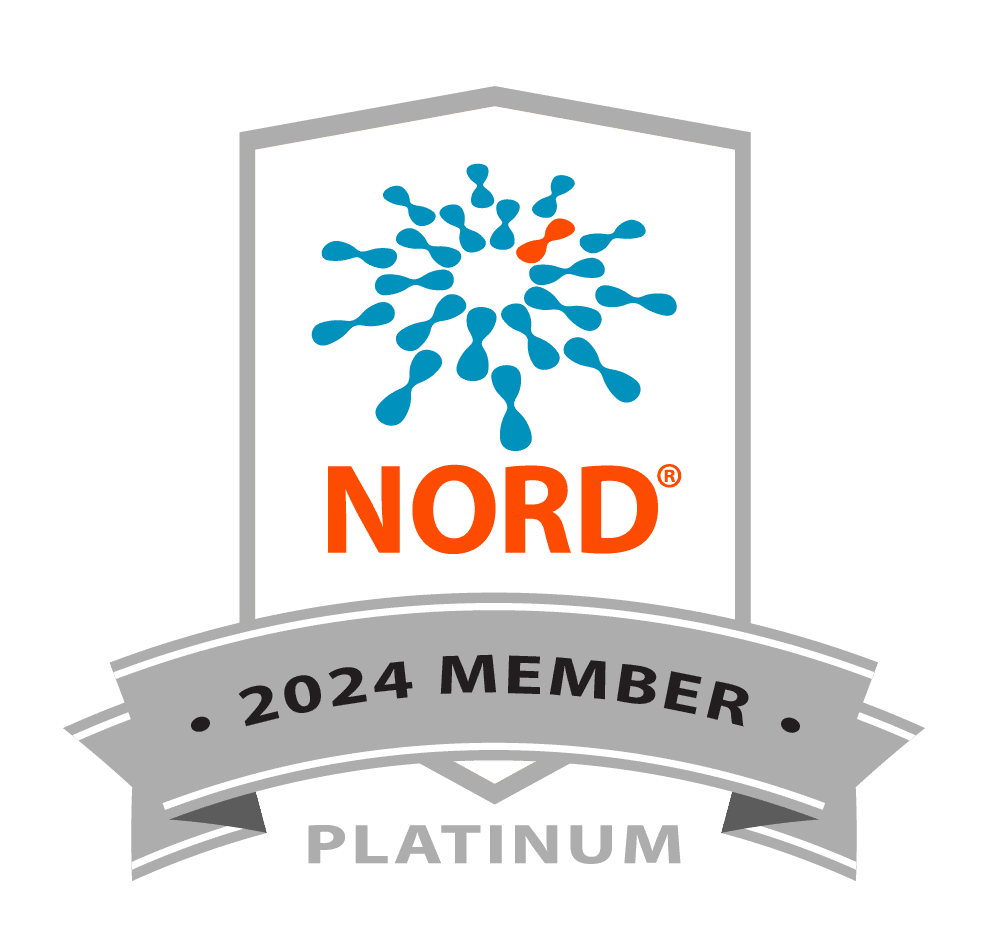Research on Rare Neuroimmune Disorders and Rheumatologic Diseases
October 10, 2021
Dr. Rohini Samuldralwar reviewed categories of rare diseases and the processes for identifying those conditions, described primary research goals and the trials that are underway to inform treatment management and best practices to inform providers on how best to treat rare neuroimmune disorders and rheumatologic diseases. They covered current treatment options, future directions for research, and discussed hurdles both in research and for individuals with these diseases.
PDF TRANSCRIPT
Transcript
[00:00:00] Roberta Pesce: Well, for our next talk, I will be joined by Dr. Rohini Samudralwar, Assistant Professor with the Multiple Sclerosis Research Group in the Department of Neurology at McGovern Medical School at the University of Texas Health Science Center, who will tell you a little bit more about how the research she is conducting on rare neuroimmune disorders and rheumatologic diseases. Thank you so much, Dr. Rohini. Over to you.
[00:00:32] Dr. Rohini Samuldralwar: Thanks so much for having me. Yeah. So today we’ll talk about some research that’s been going on, and not only at our institution, but across the country, on some rare diseases and some neurorheumatologic diseases. So, we’ll focus on a few different categories of rare diseases, and then some hurdles that we’re facing in this area of research, some things that are currently being conducted, and where we’re hoping to go for the future.
[00:01:12] So after the past couple of days, I’m sure we have a really good understanding of what constitutes a rare disease and what, hopefully, has been emphasized is that although a disease is considered rare, there’s still such a huge impact on that individual patient, as well as the family and friends that are involved in their care. And so, it’s all the more important to focus on accurate diagnosis, accurate treatment methods, and best practices.
[00:01:41] Before I get into all the research, I just want to review some of our common manifestations in neuroimmune diseases and why this would be important in our research efforts as well. So, throughout this weekend, we’ve learned about Transverse Myelitis, Optic Neuritis and ADEM. The three common manifestations of so many different rare diseases. And at present, our diagnostic methods, many times rely on pattern recognition and identifying how these three patterns come together and lead to an accurate diagnosis of a rare condition. Many times, it relies on an expert’s own knowledge, reading the literature, and what we’re really missing is a simple blood test many times, a simple spinal fluid test, or a simple imaging test that can get us a more accurate diagnosis, especially in centers where, perhaps, there is not an expert available.
[00:02:38] But as you can see, it can be very challenging because many of these combinations and manifestations can really be any, many different types of rare diseases. So, what I really believe our research goal should be in this space is focusing on better diagnostic practices, developing targeted therapy, and then developing best practices where, as mentioned before, where we have uniform methods of diagnosis and treatment methods despite where someone presents with a neurological condition. Today I’ll focus on a few different diseases of interest, one being Autoimmune Encephalitis.
[00:03:21] I’ll quickly highlight some things in NMO Spectrum Disorder and MOG Antibody Disease, neurosarcoidosis which is my particular area of interest, and then other neurorhematological diseases where we actually have more of a challenge in research efforts in general. So, in Autoimmune Encephalitis, much like in the name, our body produces antibodies for some sort of reason, many times can be related to a herpes infection, proceeding it, it develops a pathogenic antibody and causes neurological manifestations, and this can range from neuropsychiatric disorders to movement disorders, and can be seen in both children and adults. What’s interesting about this disease is identifying that which antibody is the culprit behind the neurological manifestations, can many times help us guide our therapy and figure out our prognosis as well.
[00:04:22] At present, what we many times will do is depending on what clinical, what combination of clinical symptoms arise, we have a hunch about the type of antibody that may be involved, and thankfully nowadays we have very good blood and spinal fluid testing that we can send out that includes a whole host of these antibodies. So even if there’s an antibody that we haven’t thought of, it may be on that panel. The challenge, however, is that there’s many antibodies that we haven’t identified, so there are, there is a category of Autoimmune Encephalitis where we call antibody negative, which really means, and perhaps, it’s just an antibody that just hasn’t been identified and can sometimes delay treatment. Each antibody, like I mentioned, tends to have a typical, common type of presentation and it’s really up to the clinician to identify if that clinical presentation is consistent, and so sending off the testing is very, very important.
[00:05:24] The challenge here, in this spectrum of disorders, is less so the diagnosis nowadays, and more so treatment and best practices. Right now there are several different trials and evaluations and investigations going on, some that are looking at treatment management for specific antibody-mediated disease, long-term outcomes, and, I feel that one of the more important ones, really looking at best practices and recommendations so that every practitioner, whether they have experience with this disease or not, can lean on an algorithm or protocol to follow and provide the best care for a patient no matter where they are in the country or even internationally.
[00:06:12] One particular trial of interest, as far as treatment methods go, is looking at a treatment method called Bortezomib that is meant to target plasma cells. These plasma cells, we have heard this in other discussions, is one of our B cell immune targeted cells that are related to production of antibodies. So, we know that this disease is caused because our body is overproducing an antibody in the incorrect way, and so targeting the cells that actually produce the antibodies could perhaps allay a lot of the symptoms and maybe even prevent relapses or backsteps in this disease. So, we really focus on the B cells spectrum here.
[00:07:01] There’s many different types of B cells. We have different B cell targeted therapy that effects the range of B cells that we have with Bortezomib’s specifically focusing on plasma cells. The more common therapy that we use is Rituximab, the CD20 cells. So, any of the B cells that hold the CD20 epitope there. When, I would be remiss if I didn’t mention a newer trial called ExTINGUISH run by Dr. Stacey Clardy and other experts in the field. This is going to be a prospective, multi-center trial looking at another B cell therapy in Autoimmune Encephalitis. So really exciting headway made in this particular field. This is just a little bit more on the Bortezomib study, it really focuses on really refractory cases of Autoimmune Encephalitis, those folks who have maybe failed Rituximab therapy.
[00:08:06] So thinking about where we want to go in the research in Autoimmune Encephalitis and we talked about how we have a better understanding of how to test for the antibodies a bit more accurately. But really where the space needs to develop is identifying new antibodies, really focusing on therapeutic targets, and I think our headway in these couple of clinical trials is really showing some progress in this field. And then finally, based off of those trials, we can really develop best practices so anyone can get the best, sort of, therapy and care.
[00:08:46] I’ll touch very quickly on NMO Spectrum Disorder and MOG Antibody Disease, and I kind of combine them together as we know they can present very similarly, and they do have very similar targets. With NMO Spectrum Disorder, it’s really the bastion of our rare disease spectrum. It really showed the general community and a lot of folks that we can have really great clinical trials to develop dedicated therapies. So now in NMO Spectrum Disorder, we have three FDA approved treatments where not too long ago we had none. And so, it’s really been an example of how to develop clinical trials in the rare disease space and hopefully can be the gateway to other, helping other neuro, rare diseases develop institute, FDA approved therapy.
[00:09:41] With MOG Antibody Disease, we’re not quite in the same space yet as NMO Spectrum Disorder, but hopefully we’ll get there soon. We, many times again, use Rituximab, or B cell therapy that I mentioned before, and sometimes some other oral agents. But there is a question in using Ofatumumab, a therapy that we actually currently use in Multiple Sclerosis and has been FDA approved for that. Perhaps we can borrow such a mechanism in MOG Antibody Disease and dedicated clinical trials here may really be of use and be very, very helpful in getting approved therapy and the right therapy for this particular disease space.
[00:10:27] Now, I’ll focus more on some neurorheumatological diseases, and what I mean by that is rheumatological diseases that can, that for some reason can also affect either the central nervous system or peripheral nervous system. I’ll focus on just a couple here. Neurosarcoidosis is one of them and I mentioned that we are thinking about, when we’re thinking about challenges in the neuroimmune space, we’re thinking about how to better diagnose, and how to better treat, and then best practices. With neurosarcoidosis, it really is all about, at the moment, it’s all about finding better diagnostic tools because there isn’t a great biomarker to make the diagnosis clearly.
[00:11:12] Right now, we have something called Angiotensin-converting enzyme, but in neurosarcoidosis it really is not sensitive or specific, and has led to misdiagnosis and really a under-diagnosis of this disease leading to no or minimal treatment for patients. So, it’s really about going back to the immune pathway. What actually, how actually does a neurosarcoidosis work, what we call systemic sarcoidosis develop, and looking at those immune targets.
[00:11:42] And there’s a couple different, there’s a little bit of different avenues of research going on about this, and one of the biomarkers that’s being studied is soluble interleukin 2 receptor. And when compared in other neuroimmune disease, tuberculosis, meningitis, bacterial meningitis, MS, it seemed that this receptor, this molecule, was more likely present in a neurosarcoidosis patient, in the spinal fluid, so maybe a better clue for diagnosing the disease compared to something like Angiotensin-converting enzyme. The same is seen in the CD4 to CD8 ratio, a lot of these methods are actually things that are done in pulmonary sarcoidosis, so we’re really borrowing the same immune, looking at the same immune pathway and borrowing those diagnostic tests to see if, perhaps, we can use those to better diagnose it in the neurological space.
[00:12:39] One of my proposed research that we’re working on right now is comparing the sensitivity and specificity of the IL-2 receptor and ACE, and really showing that one might be better than the other, and going a little bit further than that to look at patient reported outcomes, doing surveys, looking at the quality of life, and seeing if the quality of life is improved based on avenues, different avenues of treatment, and really using the MRI as our marker of something improving or not improving further.
[00:13:13] So future directions here is really, again, identifying biomarkers, really starting from the very beginning, finding a better practice in diagnosis, and that then can lead to therapeutic targets, and, of course, best practices. The other neurorheumatological conditions, like Lupus and Sjogren’s or Rheumatoid Arthritis, or ankylosing spondylitis really are much more, a much bigger challenge. It is much more rare and much more difficult to develop clinical trials based on that.
[00:13:45] But even before we can think about developing clinical trials in this space, we really need to understand the mechanism of developing neurorheumatological conditions, and there are several proposed theories of why certain rheumatological conditions effect the spinal, the nervous system. But there, and perhaps it’s different in different conditions, but this hasn’t been confirmed yet. Focusing on Lupus and Sjogren’s, we’re really relying, again, on expert understanding of the disease, collaborating with our rheumatology colleagues to confirm a systemic diagnosis, and then using that to see if it correlates with our MRI, or EMG findings, our neurological work-up essentially.
[00:14:35] The other challenge is that there’s many overlap syndromes. So many times, when we see a Neuromyelitis Optica case, we also notice that they have a positive Sjogren’s antibody or vice versa. So, it is important to identify whether both are present or not, and many times can require further diagnosis through biopsies of different areas outside of the nervous system. So really, some hurdles that we’re facing from the neurorheumatological aspect is first understanding the mechanism of disease, really identifying why certain people develop neurological conditions, whether there is something different about their physiology, whether there is certain biomarkers that we should be focusing on outside of the basic testing for rheumatological conditions.
[00:15:30] Then, being clear about the role of overlap syndromes, should we be treating two diseases at the same time, should we be treating one underlying condition, or does it vary? And then, identifying standardized therapy. Our rheumatology colleagues are a great resource because they use a lot of the same types of therapies for their conditions. So perhaps, what really ends up happening in the clinical setting is borrowing the same types of therapy and trying to treat both diseases at the same time. What would help overall is really finding, again, best practices and standardized therapies for these conditions where we’re seeing both rheumatological and neurological involvement.
[00:16:19] So future directions here, really is developing dedicated translational studies, meaning bridging the gap from the laboratory to the clinical setting and identifying biomarkers, and then understanding of the basic physiology here. Really focusing on collaboration with a non-neurologist in this setting because we many times very much need to rely on their diagnostic tools to help us make a diagnosis, and perhaps developing working groups to eventually develop trials with these collaborations. Taking a step back and really, really taking a bird’s eye view, we not only have hurdles from patient to patient and in diagnosis and in therapeutics, we also have to worry about insurance approval, convincing the insurance that although there aren’t standard treatment protocols, that these theoretical treatment options are viable, and then managing disability because inevitably in the rare disease space this does happen quite a bit, especially when diagnosis is delayed.
[00:17:32] Moving forward, hopefully these collaborations and dedicated collaborative trials can be helpful in obtaining better diagnosis, faster diagnosis, and then leading to better treatment and even faster treatment so that we minimize disability and lead, and this leads to a better quality of life for all our patients. In the same way, collaborations among all our different organizations that help these rare conditions can also really provide a great effort in identifying better diagnostic and treatment methods. Thank you.
[00:18:14] Roberta Pesce: Great. Thank you so much, Dr. Rohini. We have a couple of questions that came in, maybe I can add a few before we finalize your talk, so the first question is, “Is there much global discussion on diagnosis and therapies for rare neuroimmune disorders? As they are a rare global approach would give a wider study group. Currently experiences are very different by country. Do you know anything about this?”
[00:18:42] Dr. Rohini Samuldralwar: That’s a, it’s a great question. You sort of hit the nail on the head to develop a better understanding we need to look at a larger population, and in some instances, there are in the sarcoidosis phase, there are a few international collaborations going on, but I think they’re at very early stages here. And I believe that the Autoimmune Encephalitis population also has them, such a collaboration, but certainly they’re at the beginning stages and we do need to collect more data and patient experiences.
[00:19:14] Roberta Pesce: Right, right. Yes. Absolutely. Thank you. And “How do I know if my symptoms are being caused by my neuroimmune disorder or if they are actually symptoms of another rheumatologic disease?”
[00:19:25] Dr. Rohini Samuldralwar: This is really where the collaboration between your rheumatologist and neurologist might come in, and so talking to your rheumatologist about this first is probably the best first step, and they can many times distinguish from the get-go whether this is truly attributed to the rheumatological issue or this is something where we need a neurology colleague or additional testing, like an MRI or EMT, to help with your diagnosis.
[00:19:52] Roberta Pesce: Right. Yes. Absolutely. Well, thank you so much. I think we reached the end of our time here, but we really appreciate you being here. I thank you for giving such a comprehensive talk.
[00:20:02] Dr. Rohini Samuldralwar: Thank you so much. I appreciate it.
[00:20:03] Roberta Pesce: Thank you.



